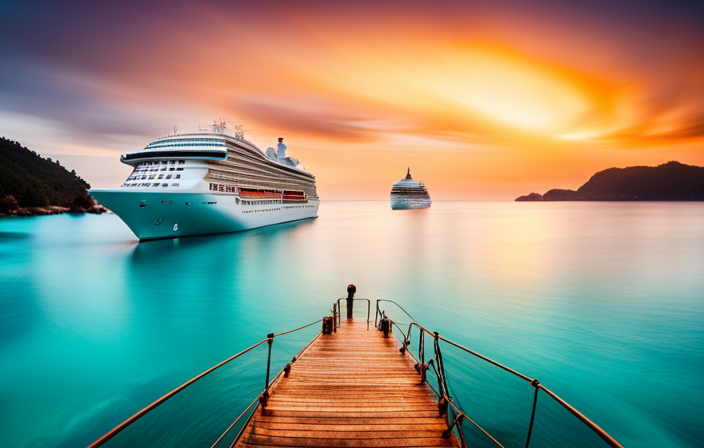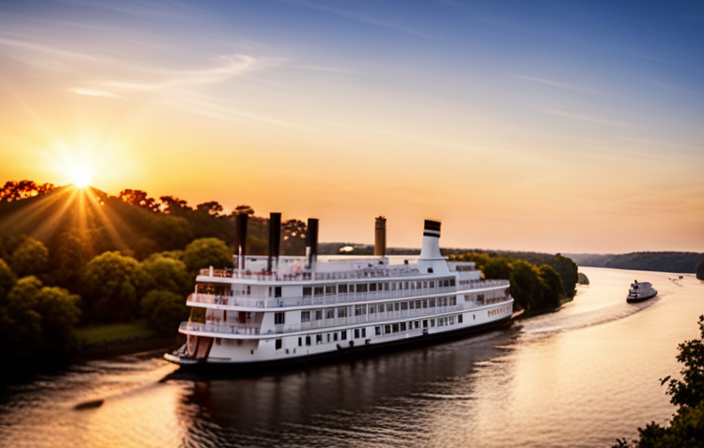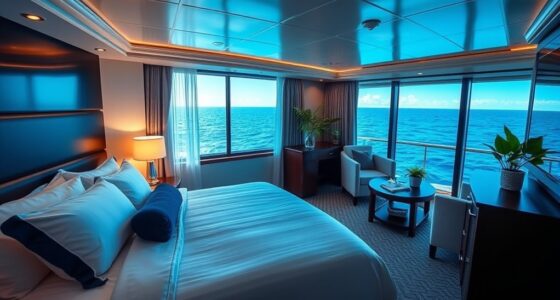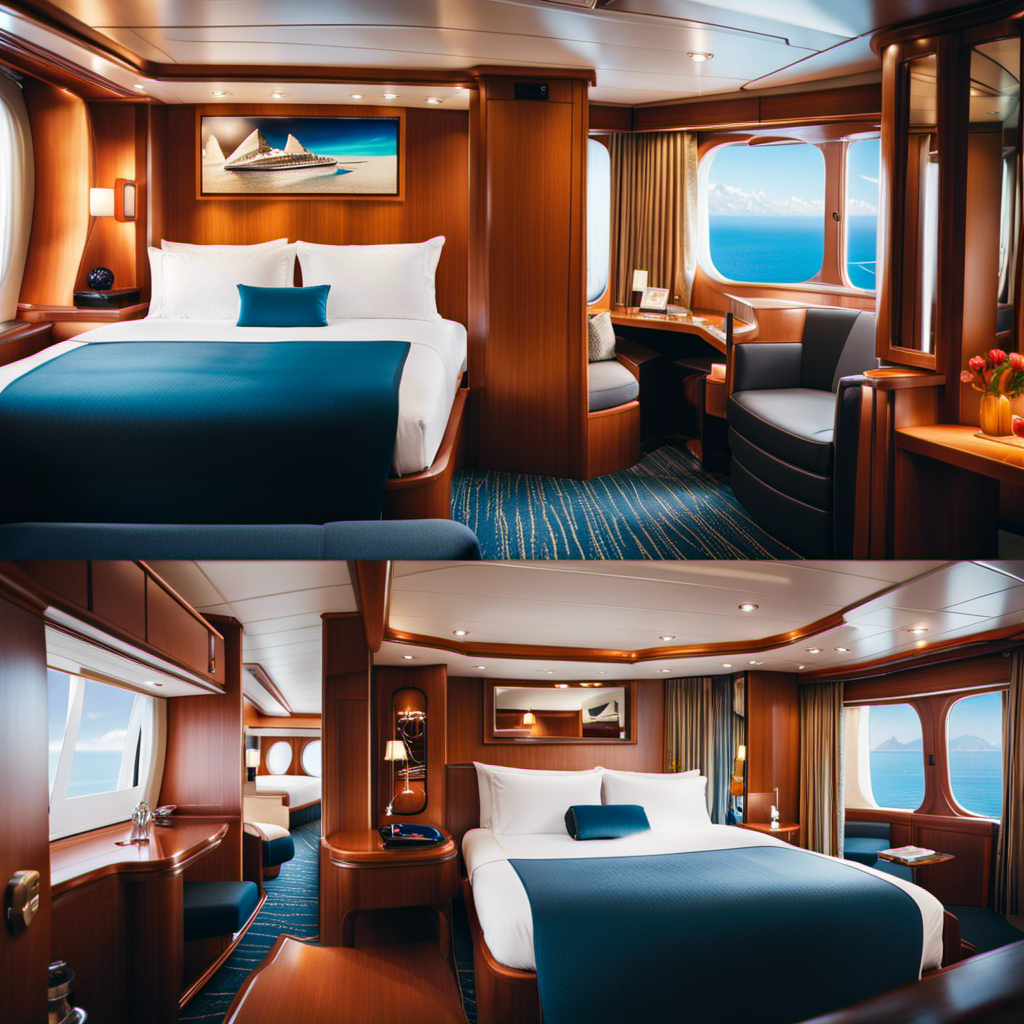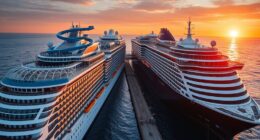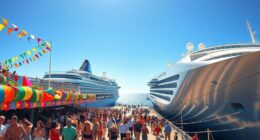I am fascinated by the detailed operations involved in transporting passengers from the ship to the shore as a cruise ship activities enthusiast. An essential but often overlooked part of this process is the tender, a small ferry boat that shuttles passengers between the dock and the ship.
These tenders are a vital mode of transportation, especially in ports without piers or during inclement weather conditions. They ensure that passengers can safely embark and disembark, even when docking is not possible. While they may cause some wait times, the tender service is typically included in the cruise fare, making it a convenient option for travelers.
Although docking may be faster, tenders offer a unique and scenic ride, allowing passengers to take in the beauty of their surroundings. However, it’s worth noting that tenders can sometimes induce queasiness and expose passengers to engine fumes.
Join me as we explore the world of tenders and discover why they are essential transportation for cruise passengers.
Key Takeaways
- Tenders are small boats used to transport cruise passengers between ship and shore.
- Tenders are essential in ports without piers or during poor weather conditions.
- Tenders offer a scenic ride to and from the ship, but can result in longer wait times for passengers.
- The choice between tendering and docking depends on port circumstances and passenger preferences.
What are Tenders?
Tenders are small boats used to transport cruise passengers between the ship and the shore, especially in ports without piers or during poor weather conditions. There are different types of tenders, including private boats and the ship’s own lifeboats.
Despite some disadvantages, such as queasiness and fumes from the engines, tenders offer several advantages. Firstly, they provide a convenient mode of transportation when the ship cannot dock due to various reasons like a lack of pier, shallow water, or bad weather. Additionally, tenders offer a scenic ride to and from the ship, allowing passengers to enjoy the beautiful views of the port.
While tenders may operate one at a time, causing some wait times, the tender service is usually included in the cruise fare, making it a cost-effective option for passengers.
Purpose and Use
When it comes to getting from the ship to the shore, nothing beats the thrill of hopping onto a small boat and feeling the wind in your hair. Tenders are essential for cruise passengers in ports without piers or during poor weather conditions. They help move passengers between the ship and the port when docking is not possible due to a lack of pier, shallow water, or bad weather.
However, tender service can sometimes result in longer wait times for passengers. It’s important to note that the cost of tender service is usually included in the cruise fare, so passengers don’t have to worry about additional expenses. Despite the potential wait times, tendering offers a scenic start or end to a port visit, providing passengers with a unique experience that can’t be replicated when the ship is docked.
Comparison with Docking
Comparing the experience of docking versus using tenders, I found that while docking offers a faster embarkation and disembarkation process, tendering provides a scenic ride to and from the ship.
Tendering may take longer due to the need to transport passengers one at a time, causing some wait times for passengers. However, this mode of transportation offers a unique opportunity to enjoy the picturesque views of the port and the surrounding areas.
On the other hand, docking eliminates the queasiness and fumes that can be experienced on tenders, as passengers remain on the ship throughout the entire process. Despite the potential for lines during the docking process, it still offers a quicker and more efficient way to get on and off the ship.
Ultimately, the choice between tendering and docking depends on the specific circumstances of the port and the preferences of the passengers.
Frequently Asked Questions
How much does it cost to use a tender service?
Using a tender service can be like taking a scenic detour on your cruise journey. While prices may vary, the benefits of convenience and access to ports make it a worthwhile expense for a seamless and enjoyable travel experience.
Are tender services available 24/7?
Tender services may not be available during bad weather conditions for safety reasons. As for pets, it depends on the cruise line’s policy. Some may allow pets on board the tender, while others may not.
Can passengers bring their luggage on board the tender?
Passengers are not typically allowed to bring their luggage on board the tender. Luggage restrictions are in place for safety reasons and to ensure a smooth embarkation process. It is important to follow all tender safety precautions.
Are there any restrictions on who can use the tender service?
Passenger eligibility for tender service is subject to certain restrictions. These restrictions may include physical limitations, age restrictions for safety reasons, and limitations on bringing certain items onboard the tender.
How many passengers can a tender boat accommodate at a time?
A tender boat can accommodate a varying number of passengers depending on its size. Larger tenders can hold around 200-300 passengers, while smaller ones may only hold around 50-100 passengers at a time.

